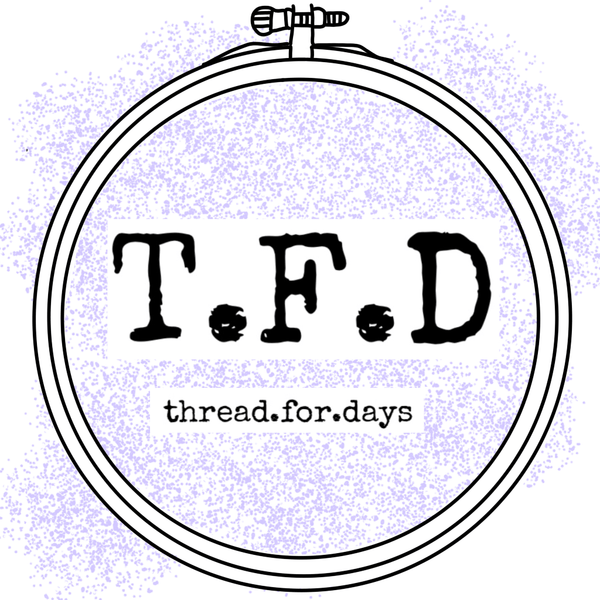How would you feel if I told you most of my embroidery art was made up of literally only 4 stiches?
Embroidery can look really intimidating and impressive especially when you are just starting out.
I felt that way when I started my embroidery journey- I didn't know where to start or what stitches to learn to learn and practice.
What helped me was to look at the art and learn about the style I liked. This took me down a thread painting path. Once I knew that I loved thread painting, I started to learn some basic stitches that fit the style.
In this post I am going to talk about four of my favorite stitches and how I like to use them.
1. Split Backstitch
(Video Credit: Last Minute Laura)
I make my own patterns and usually use only 1 thread at a time. When I design a piece I always use a split backstitch to outline the design. With black thread I find that the outline comes out quite crisp and gives me a good foundation for when I start to fill in the design.
A split backstitch is easy to do-instead of the standard split stitch where you come through the center of the previous stitch you come through the fabric and then split the stitch which makes it a little bit more forgiving and easier to learn.

(Image from my IG: I outlined this Midsommar Hoop with a split backstitch )
2. Satin stitch
(Video Credit: Penguin and Fish)
The satin stitch is another easy-to-learn stitch that is GREAT for filling a design. I use this stitch often when I have a somewhat even space to fill in (solid shape like a rectangle, square, circle, etc), or when I am only using a single color in one area of a piece.
This stitch (when done right) also looks fantastic on the front and back of the hoop. It's perfect for those (like me) who like to show off their hoop butts.
One thing to note with this stitch is that it does use a lot of thread! So be mindful when deciding to use this as a fill option. 
(Bong Voyage Hoop: lettering in "Bong Voyage" done with Satin Stitch)
3. Long and Short Stitch
My absolute favourite stitch to use- and foundational to thread painting- is the long and short stitch. It is literally just that; long and short stitches. This stitch is incredibly satisfying and super forgiving.
While traditionally you stack long and short stitches to get this look, I think you can really free flow in any direction with this. I never limit the boundaries of this stitch and really like to organically make it flow in the direction of my design.
This is the predominant stitch I use to fill my hoops!

(Captain Spalding hoop: Filled with a long and short stitch, outlined with Split Backstitch).
4. French knots
(video Credit: Penguin and Fish)
While I don't use French knots terribly often when I am thread painting/designing my larger hoops, it still is a helpful stitch to know.
I use French knots when I am doing small punctuation (the dots in Gender?! I Don't Even Know her!), when I am working on floral pieces (the knot work in the Betty White Pattern), and when I want to fill a space in a textured way (see Pardon Weed offenses). Sometime I will even use them to fill in small dots/colour when I'm working on eyes.
While this isn't primarily my first go-to stitch, it is however incredibly handy when adding texture, small details, and floral work.

(Betty White Hoop pattern uses French knots in the woven wheels as well as added texture/embellishment).
Wrapping it up!
Everyone has their own preferences and go-to stitches with embroidery and these are mine. These four stitches really make up the foundation of my pieces, occasionally I like to branch out and try new stitches, but really these four are my favorite for the look and texture I prefer for my pieces.
Even better, they are all pretty easy to learn (the French knot may take some practice).
I hope this inspires you in your stitching journey!
Stay Weird and Wonderful,
~Kass

